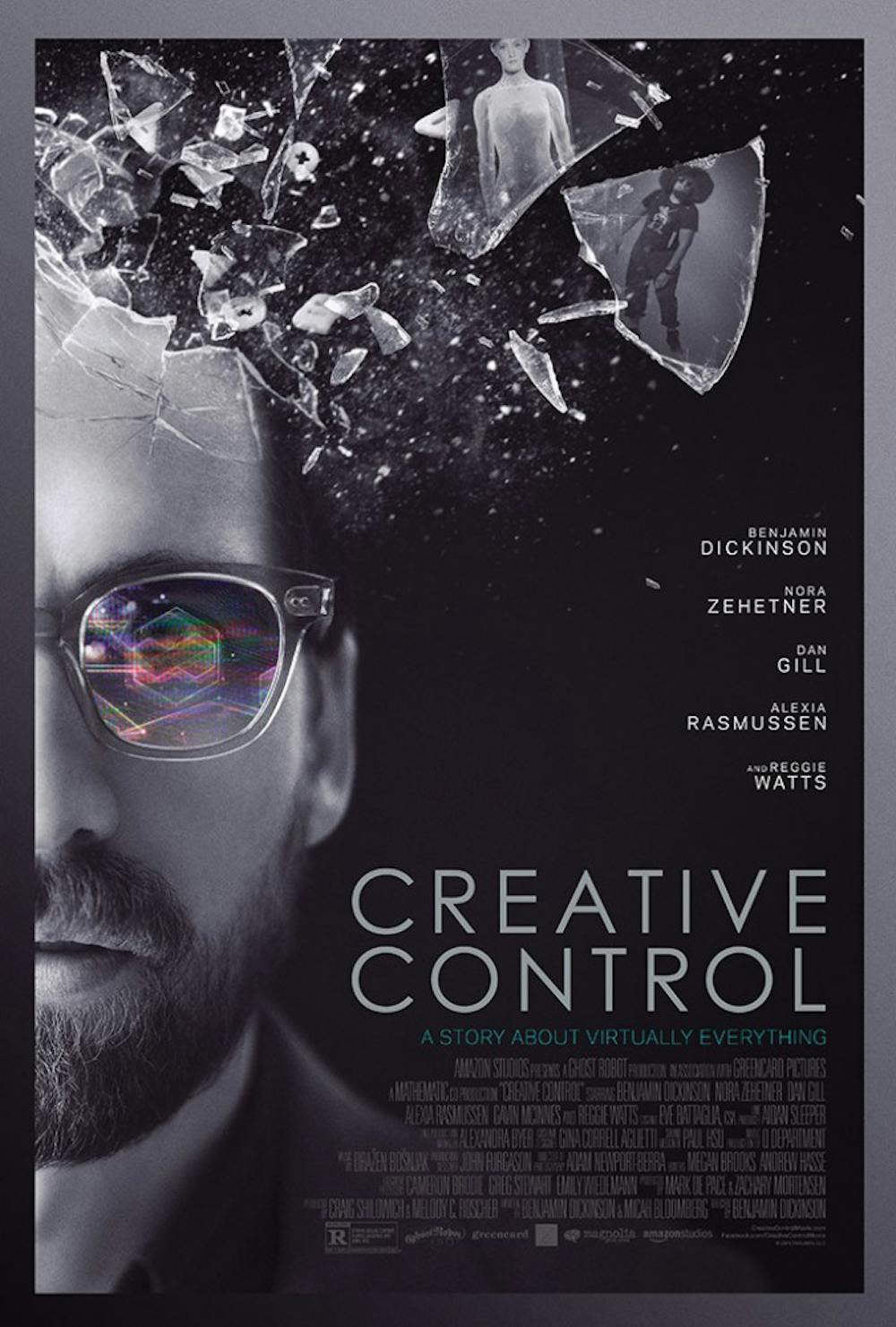“Can I be the girl?” asks Benjamin Dickinson as he slides into the booth side of the table at White Dog Cafe.
The Brooklyn–based director’s second feature film Creative Control is about to hit theaters in wide release this Friday, in Philly playing at the Ritz at the Bourse. Dickinson plays the lead role as David, an adman who spirals into self-destruction as he becomes dependent on a pair of eyeglasses that augment reality for pleasure.
“I wanted to make a movie that was set just a little in the future because I was trying to do a social satire more than hard sci–fi. To me, all the technology in the movie is present, it’s just one step further.” He classifies his film as “spec–fiction,” a particular brand of science-fiction that takes an existing technology and speculates about what it could do.
In fact, a centerpiece of Creative Control is the way that walls between the simulated and real can collapse in the present, and the torture that this causes. For the millennial who depends so much on a screen in his pocket, it’s easy to relate to David’s confusion as he blurs the distinction between his real-life best friend’s girlfriend and the digitized fantasy he makes of her. Dickinson explains this dilemma: “It’s strange that there’s so much fluidity between talking on the phone in person, texting, forgetting where you heard things, pretending it was in person.”
Dickinson was concerned that his film would be lost on teenagers who have developed different ideas around technology, but this was not the case, as several teenagers on the festival circuit congratulated him on Creative Control’s realism. The film attains a universal reach to everyone who's ever felt the sensation of wanting to be in contact with everyone and no one at the same time.
For this reason, Dickinson opted for a self-reflective ending that forces the audience to reconsider its own relationships with technology. The only escape that’s posited at the end of the movie is going off the grid.
“I wanted the ending to be ambiguous. I wanted to leave it that way because I want the audience to be like ‘What am I gonna do? What kind of person am I gonna be?’”
Dickinson doesn’t think that our relationship with technology is productive, in that it doesn’t operate in a two–way function. “After a while you’re in a feedback loop. It’s just you and your fantasy, you and your projection. And the classic comparison is addiction.” He talks about the way that South Korea has a 12–step program for video game addiction, and how we need the same thing for pornography addiction in the United States.
To portray this seductive quality of technology, the entire film is shot in black and white, save for the glimmer of color that is Sophie’s avatar, the simulated version of David's dream girl. This pop of color effect was used in a Schindler’s List–esque way to show how technology is more alluring than reality.
As the conversation rounded up and the check for lunch came, Dickinson expressed his gratitude for the creative management that Amazon Studios provides, in distributing his movie and providing a platform for more experimental endeavors like Transparent.
After an hour of talking, he pulled out his phone and asked if I could give him the number of the publicist who set up the lunch. As I slid my iPhone out of my pocket to read out the digits, I realized that this lunch was probably the longest stretch of device–free time I'd enjoy all day.

